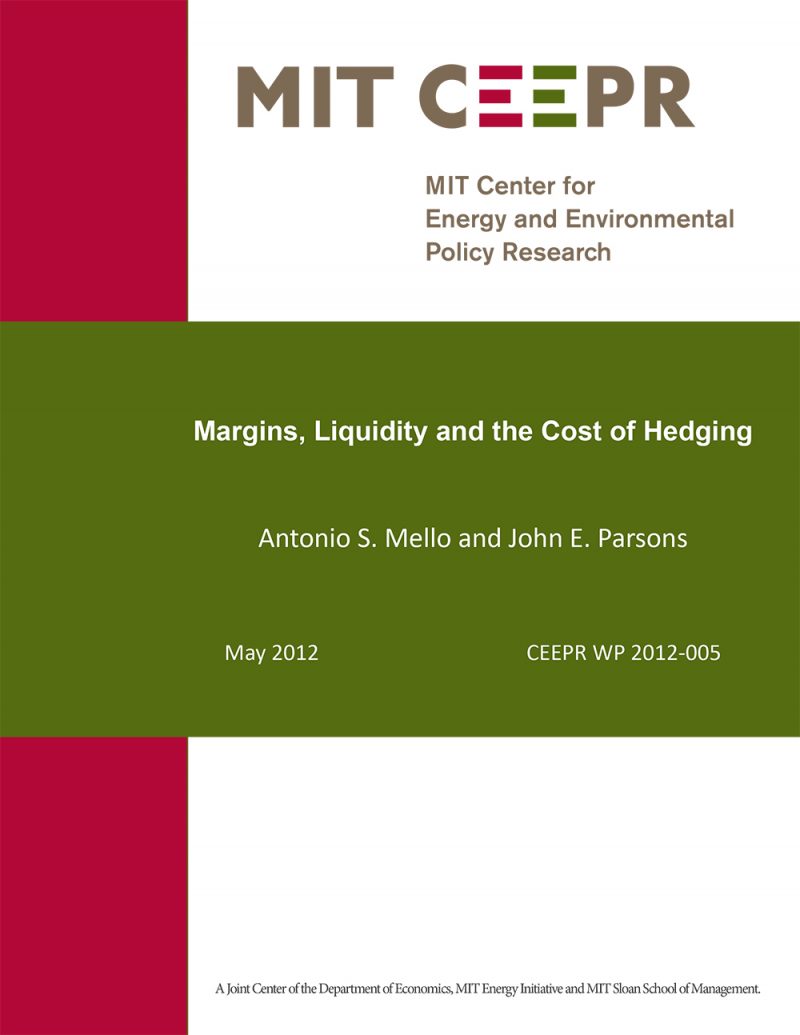Margins, Liquidity and the Cost of Hedging
Antonio S. Mello and John E. Parsons
May 2012
Recent financial reforms, such as the Dodd-Frank Act in the U.S. and the European Market Infrastructure Regulation, encourage greater use of clearing and therefore increased margining of derivative trades. They also impose margining requirements on OTC derivative dealers. One question arising out of the debates over these reforms is, does a margin mandate increases the cost of hedging by non-financial corporations—the so-called end-users of derivatives? Our answer is, No. We show that a non-margined derivative is equivalent to a package of: (i) a margined derivative, and (ii) a contingent line of credit. A margin mandate merely requires that this package be marketed as two distinct products, but it does not change the total financing or capital that the non-financial corporation requires to back its hedging. Nor does it raise the cost to banks or other dealer of offering the package, at least not directly. There may be an indirect effect if the clearing mandate succeeds in lowering systemic risk, but indirect macro effects such as this are beyond the scope of this paper. We also explore how accounting rules and bank regulations may treat the implicit credit embedded in the non-margined derivative differently from an explicit line of credit. This is important to understanding business and banker reaction to details of the proposal. Finally, we place the current debate in the context of the historical evolution of margin practices and regulations from the earliest trading of derivatives in the U.S. in the 1860s to the present.



